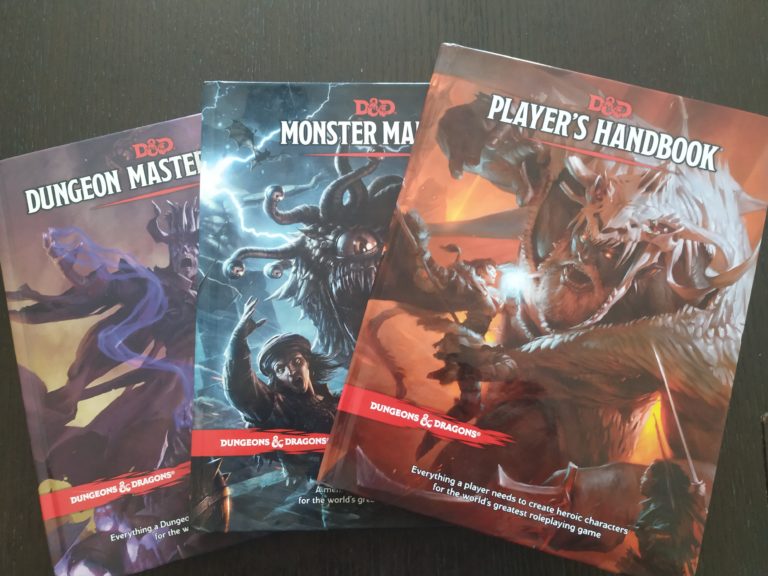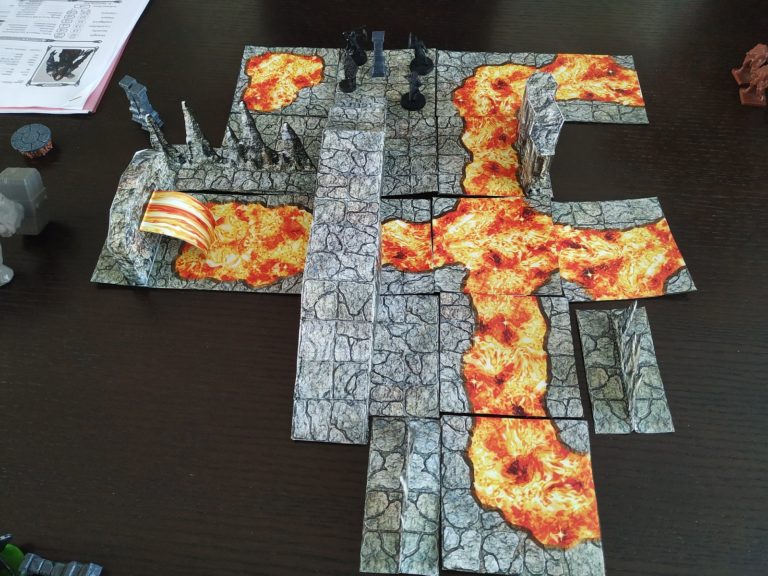Thanks to Ari Maunula and Nico Maunula for contributing this article!
Bored in quarantine? Interested in games but want to try something “meatier” than board & card games? Here’s a quick guide to get you started with tabletop role-playing games!
Tabletop Role-Playing Games
The best thing about tabletop role-playing games, or RPGs in short, is that you need only a few items to start: a copy of the rules, some pencils and paper, a set of dice, and your imagination. Normally 3 to 5 people are needed, but you can also play some games solo (e.g. Ironsworn RPG). Each player will play the role of a character in the world of the particular game and one player will be the Game Master, who moderates the game and acts as a narrator.
There are tons of games with different settings and mythologies. All come in varying levels of rule complexity and structure. You can also play pretty easily over the Internet, so in a way it’s the perfect activity for these difficult times. A role-playing session normally takes a few hours, but you can tune the length as you see fit.

Dungeons and Dragons (D&D)
If you’re into fantasy, Dungeons and Dragons (5th edition) is the way to go. “D&D” is also one of the first role-playing games ever made and it’s still the most popular tabletop RPG out there. The rules are simple enough to follow as a beginner and the setting is familiar if you’re coming from Lord of the Rings and such.
D&D is probably at its best with 4 to 5 players. Someone needs to be the Game Master, or the “Dungeon Master” (DM) in D&D terms. This individual guides the players onwards and controls the monsters & events that the player characters face during the adventure. The DM should also be familiar with the ruleset — well, everyone should, but especially the DM needs to know the rules, or the bulk of them at least. The rulebooks might be a bit daunting at first but you don’t actually need to know all the rules to be able to start playing — get a sense how the game works and go into detail later.
Getting Started with D&D
A good way to start is with the Starter Set. The box includes an essential rules handbook, an introductory adventure, five pre-made character sheets, and a set of dice. The publisher (Wizards of the Coast) has also put a PDF of the basic rules online for free. This simplified version of the ruleset covers the core mechanics of the game, a step-by-step character creation guide, and information on monsters.
When you feel like you’re ready for the full experience, you should get the hardcover books — the holy trinity of D&D manuals — Player’s Handbook, the Dungeon Master’s Guide, and the Monster Manual. These books, as well as the Starter Set, can be bought from Amazon, Walmart, or Barnes & Noble, for example. The website D&D Beyond also offers a character creator tool that can help a lot when creating your own custom characters.

Running an Adventure or Campaign
As a new DM, it’s usually easier to run a pre-existing adventure rather than immediately come up with your own story. There are many officially published adventures, and even more unofficial ones found online. Your options are practically endless. The Starter Set also includes a beginner-friendly adventure which is a good introduction to how stories work in D&D, as well as its settings and lore.
Generally, a basic adventure takes several hours to complete and a campaign full of adventures can take even several years. It’s up to you really! The DM is in control of the sessions, but the playing group as a whole needs to decide what kind of campaign they want overall. If you want shorter one-off dungeons that can be completed in one sitting, you should check out the anthology Tales from the Yawning Portal.
In addition, the tone of the campaign must be agreed together. You might want to run a serious, by-the-book campaign, or maybe you enjoy a silly and more loose atmosphere with not much relying on the rulebooks. Neither option is necessarily better, it’s just a matter of preference, but it’s good to be on the same page with your players about it.
Playing Online
The website https://roll20.net/ is one of the best free online platforms for RPG gaming. You can display pictures, like maps and monster images, and make dice rolls within the interface easily. You have digital character sheets in which you can make notes and the interface even includes a background music panel which connects to https://tabletopaudio.com/ — an awesome site that provides ambient background music to listen to while playing. You can use the text chat or the built-in voice chat while playing, which I strongly recommend using. Of course, voice chatting can be done by other means too, e.g. Skype or Discord.

Miniatures and Custom Terrain
This section is for those who want to elevate the experience further. If you’re not playing online we strongly recommend you invest in miniatures and scenery pieces (tiles or mats) to make battles visual and more tactical. The product range for both categories is huge and deciding what to use comes down to preference and budget.
D&D has its own miniature line, which is mostly pre-painted. The cheaper alternative that we’d recommend using is Reaper miniatures. They have a nice range of fantasy-themed characters and their quality is great for this kind of gaming. The downside (or upside) is that you need to paint them yourself. This is the case for most of the manufacturers, of course. Even a little paint job will make them stand out. You don’t have to be a master painter either: a steady hand and some right equipment will go a long way. We’d recommend looking for video tutorials on YouTube on how to get started on painting your miniatures.
The basic scenery can be made with just paper and some pre-made printed materials. These two sites: http://www.worldworksgames.com/store/ and http://www.fatdragongames.com/fdgfiles/ have a nice range of usable prints for all kinds of themes. They also have good instructions within the products to help you get started.

Scenery and miniatures can also be made with a 3D printer, if you have access to that kind of machine. There are plenty of free 3D models out there and you don’t have to know much about 3D modelling to make them work. For example, this site has many D&D related monsters. Don’t be deterred by the “Not For Sale” labels. Just go into the individual items and you will find links to the patterns.
